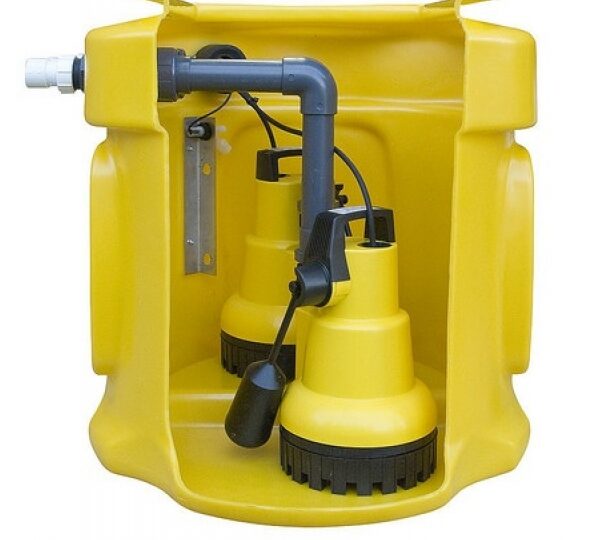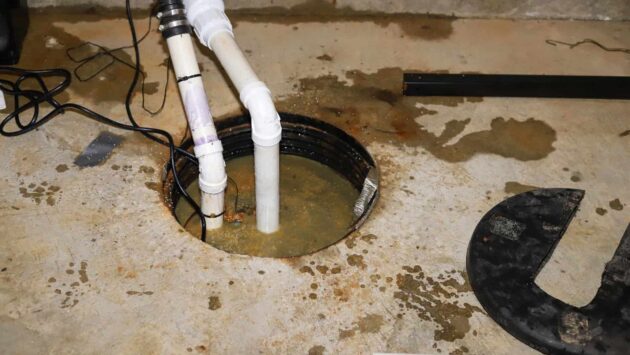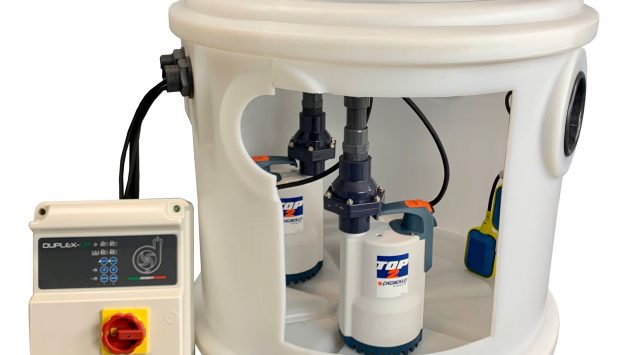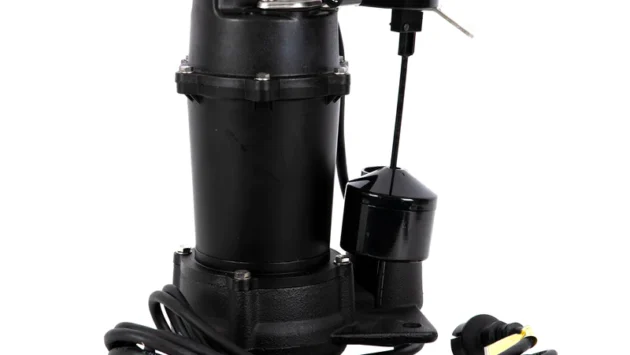4 types of sump pumps: How they work
If your basement or cellar is at risk of flooding, a sump pump is a necessity. These machines pump water out of your basement and away from your house, helping to protect your property from costly water damage.
There are several different types of sump pumps to choose from, and it’s essential that you understand how each one works so you can make the right choice for your basement or cellar.
In this blog, our pump experts will cover the two types of primary sump pumps, pedestal and submersible, and two other common types of sump pumps, backup and combination pumps. We’ll include information on how these pumps operate and the pros and cons of each type.
1. Submersible Sump Pump
This is the most common type of sump pump. A submersible sump pump sits in the sump pump and can operate underwater. It has a waterproof casing and a float switch that detects when water in the pit has reached a critical level and switches the motor on. Water is pumped out of your basement or cellar through an attached discharge pipe, keeping your cellar dry.
Pros:
- Submersible pumps use direct pressure rather than suction, making them more efficient and allowing them to pump water over a longer distance than non-submersible types.
- This type of pump can start operating immediately and doesn’t need priming (unlike centrifugal pumps).
- These pumps have very low noise output because they operate underwater, making them ideal for finished basements and cellars.
- Submersible pumps are considered very safe, so they’re the preferred option for homes with children.
Cons:
- Submersible pumps are typically more expensive and trickier to repair than pedestal pumps.
2. Pedestal sump pumps
The second type of primary sump pump is the pedestal pump. This pump sits above the sump pit, just above the water line. A pedestal pump has a water sensor that monitors the amount of water entering the sump pump chamber. Once the water level reaches a certain height, the pump’s motor activates, pumping out the excess water.
Pros:
- Pedestal pumps can move larger volumes of water, making them ideal for areas prone to heavy rainfall or flooding.
- This type of pump is easier and cheaper to repair than submersible pumps because the motor is above the water line.
Cons:
- Pedestal pumps are much noisier than submersible pumps because the motor is not underwater.
- This type of pump can overheat, making it a greater safety risk than submersible pumps.
3. Battery backup sump pumps
This type of pump works like the pumps mentioned above, but it’s powered by a battery rather than mains electricity. This means it will keep operating even if there’s a power outage, for example, due to bad weather. Battery backup pumps are suitable for rural areas or locations that frequently experience power outages and still want their basement or cellars to be protected during storms if their primary sump pump fails.
Pros:
- A battery-powered backup pump will continue to operate during a power outage.
- This pump provides an extra level of protection, especially when used as a secondary or backup pump.
- Having a secondary pump means your property will continue to be protected if your primary pump fails or malfunctions.
Cons
- The battery that powers the backup pump needs recharging, and it may run out during a lengthy power outage.
4. Combination sump pumps
This type of sump pump system combines a primary pump (usually a submersible pump) and a battery backup pump. If the primary pump breaks down or there’s a power outage, the backup pump will take over, ensuring that your basement or cellar stays fully protected. The backup pump will continue to pump excess water out of the sump until the primary pump is repaired or the power is restored.
Pros:
- Choosing a combination sump pump means you get all the benefits of a primary pump and a backup pump in one easy-to-install unit.
- A combination sump pump system gives you extra peace of mind and an added level of protection.
- Buying a combination pump system can be more cost-effective than buying a primary and backup pump separately.
Cons:
- Some combination sump pump systems cannot fit in a single sump chamber, so the chamber must be widened.
How we can help
Sumps and Pumps offers a range of sump pumps for basements and cellars at competitive prices. We offer a selection of high-quality submersible sump pumps and single and twin pump systems to suit a range of basement sizes and requirements.
Our packaged basement and cellar pumping stations include a sump pump chamber and submersible cellar water pump to keep things as simple as possible. These typically require some assembly, which is how we can offer some of the lowest-priced basement sump pumps in the UK.
We also offer pre-assembled, ready-to-go pumping stations like the NPS PRO Basement Sump Pump Station. These come fully built and require no special tools for easy pump installation.
If you need a battery backup to ensure that your home is fully protected even during a power outage, we also stock these and a range of pump control panels and waterproofing products.
You can browse our full range of sump pumps, pumping stations and accessories in our online shop. Or, if you’d like some advice about the best option for your basement, please feel free to contact our helpful team.



